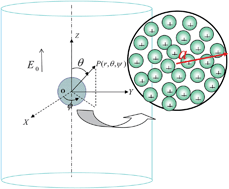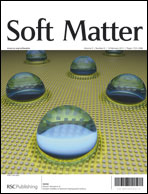Effects of electroosmosis and counterion penetration on electrophoresis of a positively charged spherical permeable particle
Abstract
We have studied the electrophoresis of a positively charged spherical porous particle (polyelectrolyte) through an electrolyte solution. The migration of the positively charged particle leads to a deformation of the anionic cloud around it. The hydrodynamics is governed by the interaction of electroosmotic flow in and around the particle, its hydrodynamic friction and the electric force experienced by the particle. Our numerical model is based on the non-linear Nernst–Planck equations for ion transport coupled with the Darcy–Brinkman extended Navier–Stokes equations and the Poisson equation for an electric field. The effect of convection and an imposed electric field on the ion transport is included in the present analysis. A control volume approach over a staggered grid arrangement is adopted for computations. The permeability of the particle causes electroosmosis within the particle, which in addition to the electroosmosis in the double layer and the induced pressure gradient due to the migration of the particle creates a double layer polarization (DLP) effect. The DLP effect induces an electric field, which retards the applied field strength. The penetration of counterions inside the particle causes a neutralization of the particle charges, which reduces the electric force exerted on the particle. The distribution of counterions, net charge density and the effective volume charge density of the particle is evaluated to analyze the dependence of the electric force and hence the mobility on electrokinetic parameters, such as the electrolyte concentration, permeability and fixed charge density of the particle. Our results show that the counterion penetration for a high electrolyte concentration or low permeability causes a significant reduction in the effective charge density of the particle, which results in low mobility. However, the double layer and surface potential assumes symmetry i.e., the DLP effect is negligible for a thin EDL or low permeable cases. The fixed charge density of the particle increases the electric body force linearly until the counterion condensation sets-in at a large value of the fixed charge density.


 Please wait while we load your content...
Please wait while we load your content...